 W
WGeneral Sir Phillip Harvey Bennett, is a retired senior officer of the Australian Army who served as Chief of the Australian Defence Force from 1984 to 1987, and later as Governor of Tasmania from 1987 to 1995.
 W
WAir Commodore Glen Albert Cooper, CBE, DFC, AFC was an officer in the Royal Australian Air Force (RAAF). During the Second World War, he commanded No. 80 Squadron in the New Guinea campaign and then No. 80 Wing in the Borneo campaign. He commanded No. 78 Wing during the Malayan Emergency, earning the Air Force Cross for his leadership. Following his retirement from the RAAF in 1970, he was appointed a Commander of the Order of the British Empire.
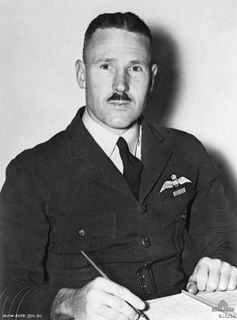 W
WAir Marshal Sir Valston Eldridge Hancock, was a senior commander in the Royal Australian Air Force (RAAF). He served as Chief of the Air Staff from 1961 to 1965. A graduate of the Royal Military College, Duntroon, Hancock transferred from the Army to the RAAF in 1929 and qualified as a pilot. His administrative training at Duntroon saw him mainly occupy staff posts, including Deputy Director of Operations and Intelligence at RAAF Headquarters from 1931 to 1935, and Director of Works and Buildings from 1937 to 1939. During the early years of World War II, he commanded No. 1 Bombing and Gunnery School, and held senior planning and administrative positions. He eventually saw combat in the Aitape–Wewak campaign of the Pacific War during 1945. Flying Bristol Beaufort light bombers, he led first No. 100 Squadron, and later No. 71 Wing. His actions earned him the Distinguished Flying Cross.
 W
WAir Marshal Sir Colin Thomas Hannah, was a senior commander in the Royal Australian Air Force (RAAF) and a Governor of Queensland. Born in Western Australia, he was a member of the Militia before joining the RAAF in 1935. After graduating as a pilot, Hannah served in Nos. 22 and 23 Squadrons from 1936 to 1939. During the early years of World War II, he was the RAAF's Deputy Director of Armament. He then saw action in the South West Pacific as commander of No. 6 Squadron and, later, No. 71 Wing, operating Bristol Beaufort bombers. By 1944, he had risen to the rank of group captain, and at the end of the war was in charge of Western Area Command in Perth.
 W
WGeneral Sir Francis George "Frank" Hassett was an Australian general who rose to the position of Chief of the Defence Force Staff, the professional head of the Australian Defence Force, serving in this capacity from November 1975 until April 1977. Hassett joined the Australian Army in 1935 upon gaining entrance into the Royal Military College, Duntroon. Serving with distinction in the early stages of the Second World War, he was promoted to lieutenant colonel in 1942 at the age of 23, and posted as a staff officer for the remainder of the war.
 W
WAir Vice Marshal Frank Headlam, was a senior commander in the Royal Australian Air Force (RAAF). Born and educated in Tasmania, he joined the RAAF as an air cadet in January 1934. He specialised in flying instruction and navigation before the outbreak of World War II. In April 1941, he became commanding officer of No. 2 Squadron, which operated Lockheed Hudsons. The squadron was deployed to Dutch Timor in December, and saw action against Japanese forces in the South West Pacific. After returning to Australia in February 1942, Headlam held staff appointments and training commands, finishing the war a group captain.
 W
WMajor General Philip Michael Jeffery, is a retired senior Australian Army officer who was the 24th Governor-General of Australia, serving from 2003 to 2008, and the 28th Governor of Western Australia, serving from 1993 to 2000.
 W
WVice Admiral Ian Warren Knox AC is a retired senior officer of the Royal Australian Navy (RAN). In a 42-year career, Knox commanded HMA Ships Torrens, Hobart and Melbourne, briefly served as Deputy Chief of Naval Staff, and was Flag Officer Commanding HM Australian Fleet from 1985 to 1987. His career culminated with his appointment as Vice Chief of the Defence Force in January 1987; a position he held until his retirement in September 1989.
 W
WGeneral Sir Arthur Leslie MacDonald, was a senior officer in the Australian Army, who served in the positions of Chief of the General Staff from 1975 to 1977, then Chief of the Defence Force Staff from 1977 to 1979; the professional head of the Australian Army and Australian Defence Force respectively.
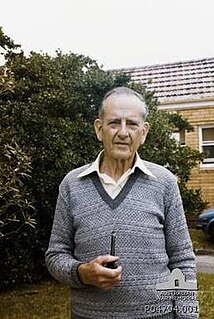 W
WWilliam Simpson "Bill" McAloney, was a senior engineering officer in the Royal Australian Air Force (RAAF) and an Australian exchange recipient of the George Cross, the highest civil decoration for heroism in the United Kingdom and formerly in the Commonwealth. Born in Adelaide, he worked as a mechanic before enlisting in the RAAF as an aircraft engine fitter in 1936. In August the following year, he attempted to rescue the pilot of a crashed Hawker Demon aircraft engulfed in flames at an airfield in Hamilton, Victoria. The first on scene, McAloney rushed into the wreckage in an effort to extract the unconscious pilot. The pilot's leg was trapped, however, and while struggling to free it one of the wing tanks burst, knocking McAloney unconscious. McAloney was pulled from the aircraft suffering severe burns and spent the next month in hospital. He was subsequently awarded the Albert Medal for his actions in the rescue attempt.
 W
WAir Marshal Sir John Patrick Joseph McCauley, KBE, CB was a senior commander in the Royal Australian Air Force (RAAF). He served as Chief of the Air Staff from 1954 to 1957. A Duntroon graduate, McCauley spent four years in the Australian Military Forces before transferring to the RAAF in 1924. He was Director of Training from 1936 to 1938, and commanded engineering and flying training schools for the first eighteen months of World War II. Having been promoted to group captain in 1940, he was posted to Singapore in June 1941 to take charge of all RAAF units defending the area. He earned praise for his efforts in attacking invading Japanese forces before the fall of Singapore, and for his dedication in evacuating his men. After serving as Deputy Chief of the Air Staff in 1942–44, he was appointed to a senior operational role with the Royal Air Force's 2nd Tactical Air Force in Europe, where he saw out the rest of the war.
 W
WAir Marshal John William "Jake" Newham, AC is a retired senior commander of the Royal Australian Air Force (RAAF). He served as Chief of the Air Staff (CAS) from 1985 until 1987. Joining the RAAF in 1951, he flew Gloster Meteor jets with No. 77 Squadron in the Korean War in 1953, and subsequently de Havilland Vampires with No. 78 Wing on garrison duty in Malta. From 1958 to 1960, he served with No. 3 Squadron, operating CAC Sabres during the Malayan Emergency. He took charge of No. 3 Squadron in 1967, when it re-equipped with the Dassault Mirage III supersonic fighter. His commands in the early 1970s included the Aircraft Research and Development Unit, RAAF Base Laverton, and No. 82 Wing, the last-mentioned during its first years operating the long-delayed General Dynamics F-111C swing-wing bomber. He was appointed Deputy Chief of the Air Staff in March 1984, and CAS in May the following year. His tenure as CAS coincided with the release of the Dibb Report on Australia's defence capabilities, and the controversial transfer of the RAAF's battlefield helicopters to the Australian Army. Newham retired from the Air Force in July 1987 and became a company director.
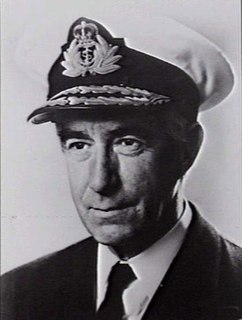 W
WVice Admiral Sir Richard Innes Peek was a senior officer in the Royal Australian Navy, who served as First Naval Member of the Australian Commonwealth Naval Board from 1970 to 1973.
 W
WAir Chief Marshal Sir Frederick Rudolph William Scherger, was a senior commander in the Royal Australian Air Force (RAAF). He served as Chief of the Air Staff, the RAAF's highest-ranking position, from 1957 until 1961, and as Chairman of the Chiefs of Staff Committee, forerunner of the role of Australia's Chief of the Defence Force, from 1961 until 1966. He was the first RAAF officer to hold the rank of air chief marshal.
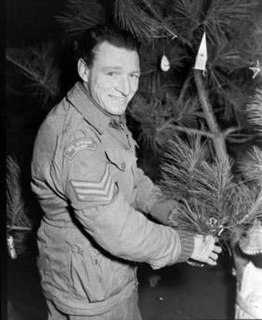 W
WRayene Stewart "Ray" Simpson, was an Australian recipient of the Victoria Cross, the highest award for gallantry "in the face of the enemy" that can be awarded to members of the British and Commonwealth armed forces. Simpson received his award for actions in Kon Tum Province, South Vietnam on 6 May 1969.
 W
WLieutenant Colonel Harry Arthur Smith SG, MC is a former senior officer in the Australian Army, seeing service during the Malayan Emergency and the Vietnam War. He was Officer Commanding of D Company, 6th Battalion, Royal Australian Regiment during the Battle of Long Tan on 18 August 1966.
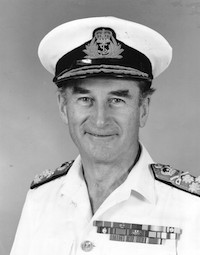 W
WAdmiral Sir Anthony Monckton Synnot, was a senior officer in the Royal Australian Navy, who served as Chief of the Defence Force Staff from 1979 to 1982.
 W
WLieutenant General Sir Henry Wells, was a senior officer in the Australian Army. Serving as Chief of the General Staff from 1954 to 1958, Wells' career culminated with his appointment as the first Chairman, Chiefs of Staff Committee, a position marking him as the professional head of the Australian Military. He served in this capacity from March 1958 until March 1959, when he retired from the army.
 W
WKevin Arthur "Dasher" Wheatley, VC was an Australian recipient of the Victoria Cross, the highest award for gallantry in the face of the enemy that can be awarded to British and Commonwealth forces. Wheatley was one of four Australians to receive the award for actions during the Vietnam War.